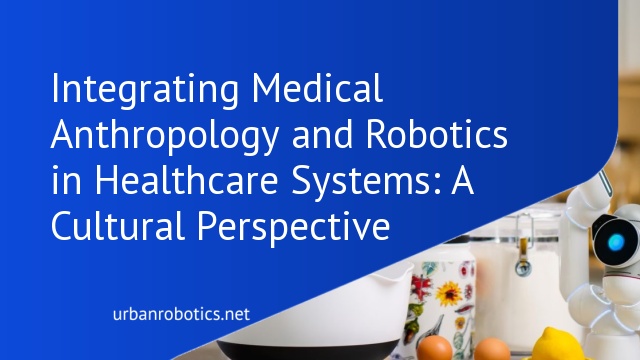Understanding Medical Anthropology
Medical anthropology examines how cultural and social factors impact health and illness. It provides valuable insights into patients’ behaviors and community health practices. By understanding these cultural contexts, we can address health disparities more effectively and improve patient outcomes.
Researchers study diverse health beliefs and practices, considering how socioeconomic and environmental factors influence health. For example, differing cultural attitudes towards illness and treatment can affect a patient’s response to medical interventions. This field also explores medical systems globally, recognizing that local customs and traditions play a significant role in health care delivery.
Incorporating medical anthropology into healthcare systems allows for more culturally competent care. It helps healthcare providers understand and respect patients’ cultural backgrounds, enhancing communication and trust. This approach is vital when integrating advanced technologies like robotics, ensuring they are accepted and effective in various cultural settings. Recognizing these factors makes it possible to create more inclusive and responsive health care solutions.
Role Of Robotics In Healthcare Systems
Robotics technology is reshaping healthcare systems by enhancing efficiency and precision in medical procedures. Medical anthropology helps us understand how these advancements impact patient experiences and cultural dynamics within care settings.
Overview Of Robotics Technology
Robotics technology encompasses systems like surgical robots, telepresence robots, and robotic exoskeletons. Surgical robots provide minimally invasive procedures with high precision. Telepresence robots enable remote consultations, breaking geographical barriers between doctors and patients. Robotic exoskeletons assist in patient rehabilitation, improving mobility and recovery times. By integrating medical anthropology, we can better assess how diverse cultural contexts interact with these technologies, ensuring their effective and ethical implementation.
Impact On Patient Care
Robotics improves patient care by reducing surgical risks, enabling remote healthcare access, and accelerating recovery. Surgical robots reduce human error and improve surgical outcomes, benefiting patients and surgeons alike. Telepresence robots facilitate consultations for patients in remote areas, ensuring timely care. Robotic exoskeletons enhance rehabilitation, enabling patients to regain independence faster. Considering cultural and social factors through medical anthropology, we can ensure these technologies are accessible and acceptable to all patient demographics, contributing to more equitable healthcare solutions.
Intersections Of Medical Anthropology And Robotics
Medical anthropology and robotics intersect in diverse ways within healthcare systems. By understanding these intersections, we improve patient outcomes and the implementation of advanced technologies.
Cultural Implications
Incorporating robotics in healthcare systems often intersects with cultural beliefs and practices. Medical anthropology helps us understand how cultural contexts influence the acceptance and use of robotics. For instance, communities with a strong preference for human touch may resist robotic-assisted surgeries or telepresence robots. By acknowledging these cultural nuances, healthcare providers can tailor robotic interventions to be more culturally sensitive, ultimately improving patient engagement and satisfaction.
Ethical Considerations
Ethical considerations emerge at the intersection of medical anthropology and robotics. We need to consider how the integration of robotics aligns with human values and social responsibilities. Issues like patient autonomy, privacy, and consent become critical when deploying robotic technologies in healthcare. For example, while robotic exoskeletons can enhance mobility, obtaining informed consent and ensuring respect for patients’ dignity are vital. Addressing these ethical challenges ensures that robotic advancements in healthcare are implemented responsibly and ethically.
Case Studies
Examining real-world implementations of medical anthropology and robotics in healthcare provides valuable insights into best practices and challenges.
Successful Implementations
Boston Children’s Hospital uses surgical robots with culturally tailored operations, resulting in improved patient outcomes and satisfaction. In Japan, the RIKEN project integrates elder care robots to assist culturally specific elder care practices, enhancing compliance and engagement. These examples show how combining cultural insights with advanced robotics can greatly improve healthcare efficiency and patient satisfaction.
Challenges Faced
Integrating robotics and medical anthropology faces several challenges. Data privacy issues arise when collecting cultural information. Another major challenge includes ensuring robotic interventions respect cultural norms without bias. Additionally, the high cost of advanced robotic systems creates disparities in access. Addressing these challenges is essential for equitable and culturally competent healthcare.
Future Prospects
The future of medical anthropology and robotics in healthcare is promising, with advancements poised to revolutionize patient care. We anticipate several innovations and societal impacts resulting from this integration.
Innovations On The Horizon
Emerging technologies in robotics like AI-powered diagnostic tools and wearable health monitors are set to enhance medical care. Companies are developing robots with advanced sensors for real-time patient monitoring, which will complement diagnostic processes. Innovations in ethnographic research tools will help customize robotic interventions to align with diverse cultural practices, improving patient satisfaction and outcomes.
Potential Societal Changes
Robotics in healthcare, when aligned with medical anthropology, could reduce health disparities by providing consistent, culturally sensitive care. Besides improving access in underserved communities, these technologies might alter societal norms around caregiving and patient interactions. As automation becomes more prevalent, we may see shifts in healthcare employment patterns, necessitating new skills and training programs.
Conclusion
The fusion of medical anthropology and robotics in healthcare isn’t just a technological advancement; it’s a cultural evolution. As we continue to innovate, we must prioritize culturally sensitive approaches that respect and enhance patient experiences. By integrating AI-powered tools and wearable health monitors, we can bridge gaps in healthcare access and improve outcomes globally. The road ahead promises exciting developments, but it’s crucial we address challenges like data privacy and cost disparities. Together, we can ensure that the future of healthcare is inclusive, equitable, and culturally attuned, transforming how we deliver care in profound ways.





